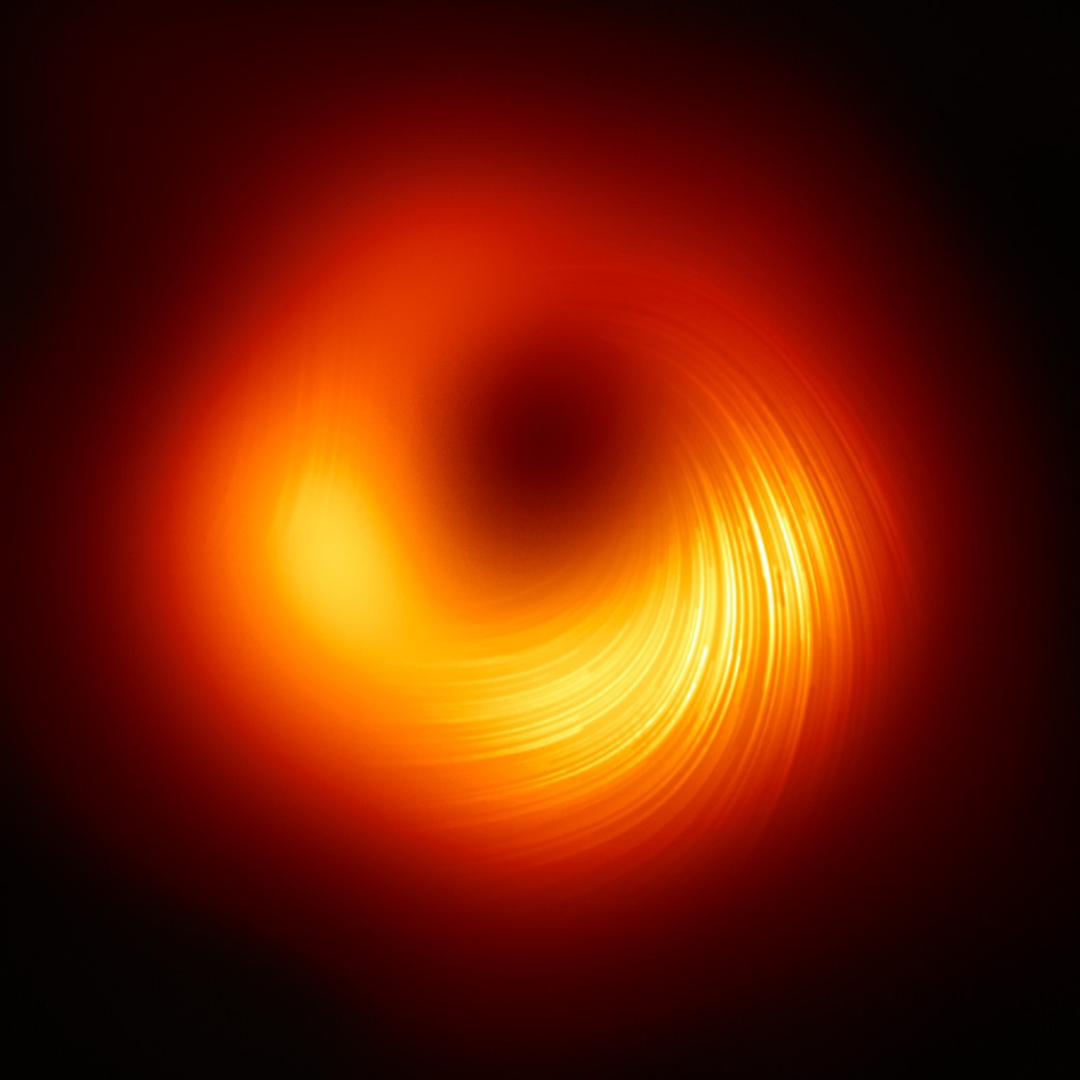Engineers at NASA say they have successfully revived thrusters aboard Voyager 1, the farthest spacecraft from our planet, in the nick of time before a planned communications blackout.
A side effect of upgrades to an Earth-based antenna that sends commands to Voyager 1 and its twin, Voyager 2, the communications pause could have occurred when the probe faced a critical issue — thruster failure — leaving the space agency without a way to save the historic mission. The new fix to the vehicle’s original roll thrusters, out of action since 2004, could help keep the veteran spacecraft operating until it’s able to contact home again next year.
Voyager 1, launched in September 1977, uses more than one set of thrusters to function properly. Primary thrusters carefully orient the spacecraft so it can keep its antenna pointed at Earth. This ensures that the probe can send back data it collects from its unique perspective 15.5 billion miles (25 billion kilometers) away in interstellar space, as well as receive commands sent by the Voyager team.
We need so much more money for NASA.
Swap the NASA and the Pentagon budget!
This is how we get to Mars y’all xD
I’m of the opinion we can’t safely travel to mars. Not in our lifetimes.
The earth has a nice magnetic field that protects us from background ionizing charged particles, and an atmosphere that catches most other radiation (X-ray, gamma).
The length of time it would take with modern rockets to get to mars exposes the crew to extreme radiation. They could survive it, but radiation over time kills you with cancer, if you survive any acute effects.
We could maybe make superconducting magnets strong enough to create a field to reduce the charged particles, but then you have to keep them powered, and still deal with the uncharged background radiation (mostly gamma/X-rays). You could create a giant cylinder of lead around the crew capsule, but that would take an extraordinary amount of time to build in orbit.
Not to mention once you are on mars, you have to maintain those protections too - the Mars atmosphere is too thin to be very helpful and it does not have a a magnetic core.
There has been a notable lack of progress in that realm, and it will likely remain the reason we don’t see a human to mars program.
I think you may have missed the jibe. NASA’s missions to the Moon were just as hazardous considering how little we knew at the time and we pulled it off. The pentagon’s budget is more than a trillion dollars and with the know-how we have these days I don’t think Mars is unattainable at all if those resources were at our disposal. They just won’t be… I guess unless China decides to try and one up us to Mars first. All it takes is injured pride for some of these people.
No, going to the moon and back was a week long, and going just TO Mars is 9 months long at the closest point.
Your looking at least at a 10x-20x increase in radiation dose over the mission which would be around 1Sv to 2Sv. That’s a very high lifetime dose in a short period of time.
And honestly, while it would be cool, there is little point of sending humans to Mars.
People really underestimate how unique and cool our planet is with all that’s going on.
Now, sending robots, and bringing some stuff back for analysis… Why not? Way cheaper too.
Not to mention, there is still a scale of size, time and resource contraint. We can’t send humans to Mars with all the tools they don’t know they need yet, just like we can’t send the rovers with all the tools we can imagine.
For humans to benefit from rapid discovery on Mars, they’d need to be able to produce those tools, chemicals, power, etc.
It would take decades to set up anything useful for a longer term mission on Mars, and it again becomes a numbers game. The longer period of time you have to account for, the wider the room for error. I don’t know many people who would be comfortable traveling through space knowing that they may not see Earth again either.
It is, and other factors would exacerbate the debilitation and cancer risk from that dose besides. I did some searching and found NASA currently uses a lifetime dose limit of 600 mSv before grounding an astronaut, and there’s also a handy chart of the relative radiosensitivity among different parts of the body.
The bioengineering challenge of mitigating 1-2 Sv of hazard starts to look more approachable with that data on board, but I know jack and shit, and am merely curious, and want NASA to cure cancer. What do you think?
Lifetime dose limit, fine. 100mSv/year is the lowest associated with a significant increase in cancers. 2Sv is severe radiation poisoning, possibly even fatal. Of course we’re talking over maybe a 18month period, probably more like 2 to 3 years.
Ok, so let’s say upper side of the full dose is 2Sv over 3 years. That’s 666 mSv/year, so right now that doesn’t look great. But it gets worse as you break it down. ~55mSv/ month. ~2mSv/day. That’s a lot. Like ~500 dental X-rays a day. Obviously distributed throughout the body.
5% of people exposed to 1Sv lifetime dose will die of a fatal cancer.
I can’t find a lot on what 666mSv/year would do to you, but from everything I gather, it would definitely shorten your lifespan. I certainly wouldn’t volunteer for it.
deleted by creator
We could maybe make superconducting magnets strong enough to create a field to reduce the charged particles, but then you have to keep them powered
The superconducting magnets you describe, do not require ongoing power, only ongoing cooling. Which in space, is more manageable.
Cooling isn’t really easier in space unless you can keep it facing away from the sun at all times.
I’ve heard a plan for water tanks that surround the crew & food supply areas would be a decent shield and useful too. But I’m not sure if you’d end to with heavy water in 9 months.
Robots would need to go to mars in advance and build reliable shielding for them to live in as well.
The energy requirements for keeping a magnet out of the sun at all times, is probably considerably less than powering a conventional electromagnet for the equivalent duration.
We’ve already achieved this on the extreme end via the new horizons probe, I’m not sure what all the fuss is about.
Heat rejection is actually a huge issue in space. The only way to get rid of heat is radiation. There’s nothing to conduct or convect into in vacuum.
So I was curious about this from a superconducting electromagnet aspect which prevented me from responding to OP on the radiation thing so thanks for getting to that.
There isn’t a way to efficiently convert heat into radiative heat fast enough to keep a superconductor cool enough long enough.
You could, theoretically, create a system that exchanges the heat through convection and conduction that then stores it in something like water. Then with the water, you pass that through fins to radiate the heat. This would give you more time with the magnet being cool enough to function.
I didn’t have any useful numbers, but it looks like at some point along the trip you’d need to disable the magnet cooling system or dump the stored water. At some point the system will just not be able to maintain the temperature.
Superconducting magnets don’t heat up naturally, not without breaking. All we’d need to do, is engineer an isolated environment for the magnet, and there’ll be no chance of it heating up, except maybe for an intense solar storm overwhelming it’s magnetic shield.
Unlike earth, where there are multiple potential sources of heat, in space the only one of note is the sun. So yes, you can’t remove heat via conduction or convection, but that also means that you can’t gain heat from it. If anything, that simplifies the design.
IIRC, we have greater chance on Venus than Mars. If we can get ourselves to get something to hover in the upper parts of Venus, we would be shielded and all that.
With Mars, most ideas are basically Vaults from fallout. Get there, find the biggest cave with smallest exit and start to isolate the walls so that air won’t run off through the soil…
This all is my knowledge, as in “knowledge”, from scraps caught on the net so yeah, take with not a grain but whole barrel of salt.
The radiation hazard still exists, it’s a long trip, easily 6 moths for a flyby, probably closer to 9-10 for an orbit transfer or atmospheric entry. You’re right, once they’re in Venus’s upper atmosphere, the combination of its thick atmosphere and induced magnetosphere would create radiation shielding once there.
There is a nice “zone” that’s about 15km tall 50km above the surface. Still have to deal with the carbon dioxide and sulphuric acid rain, and have to provide your own oxygen and nitrogen to mimic our atmosphere. Surface exploration is probably out of the question without some serious material science discoveries to withstand the temperature, pressure, and corrosion.
Nuclear thermal rocket engines look like they could cut that travel time down significantly. There’s a few prototypes in the works already.
Humanity is not yet ready to be a space-faring species as it hasn’t reached certain prerequisites and there’s still inequality and inequity in human society
Since Mars is one of the bodies in the solar system that might support life, I think that it’s morally wrong to send humans there. That will contaminate Mars.
We have plenty of work to do colonizing the moon and asteroids. Let’s wait a few hundred years until we have done really, really thorough investigation of Mars before potentially wiping out tue alien life that might be there.
alas, public funding of actual technological wizardry steals eyeballs away from the social sideshow, so… *snip*
And science in general. Those NIH cuts are insane.
For anybody else curious;
Voyager 1 uses hydrazine (N₂H₄) as fuel for its small attitude control thrusters. Hydrazine is a hypergolic monopropellant, meaning it doesn’t require an external oxidizer—it decomposes exothermically upon contact with a catalyst, producing gas to generate thrust.
The thrusters are not used for propulsion, but rather to rotate and stabilize the spacecraft so that its antenna remains pointed toward Earth and its instruments can be properly oriented. Fuel consumption is extremely low—only a few grams per year—and Voyager 1 still has some hydrazine left, although it’s running low. Once the hydrazine is depleted, the spacecraft will no longer be able to control its orientation, which means communication with Earth will cease.
The Voyager spacecraft have no engines for linear acceleration; instead, they follow the trajectory and speed gained from gravity assists during planetary flybys in the solar system.
That’s cool, but forget the thrusters, how is the battery pack on that thing still keeping it powered!?
Good news: I may have a solution to my heating problem. Bad news: it involves me digging up the radioisotope thermoelectric generator. Now, if I remember my training correctly, one of the lessons was titled: “Don’t dig up the big box of plutonium, Mark.” I get it; RTGs are good for spacecraft, but if they rupture around humans… no more humans, which is why we buried it when we arrived. And planted that flag so we would never be stupid enough to accidentally go near it again. But, as long as I don’t break it… [trails off, then starts laughing] I almost just said “Everything will be fine,” out loud. Look, the point is, I’m not cold anymore.
Fucking love this book. Funniest thing I’ve ever read, consistently, from cover to cover
If you haven’t read it already, try the new book “Project Hail Mary” also by Andy Weir. I found it even more enthralling.
Is it better than Artemis? I found it… Ok. Meh compared to The Martian.
Yes, Artemis is kinda meh. But Hail Mary is different. I found it better but at least you will find it different.
yup. I never finished artemis (but thinking about it, I really should some day). Hail Mary is really really good. Highly recommended.
(also, they are finishing up the movie, which is planned to come out next march)
I own the book! It’s in the backlog -
I’m currently working my way through the Dune series. I’m nearing the end of book 3 and then I’m going to take a break from Dune to read a few other books. Hail Mary may have to be next up
I think remembering in the book he takes a hot bath with it xD
Look! A pair of boobs! -> (.Y.)
Just finished The Red Rising series and am still feeling spacey, this sounds great. What book is this?
I think The Martian.
Ah that makes sense. Thank you! Seen the movie, have not read the book. Gonna give that a go!
That’s the quote from the movie itself, unless the book has the same scene word-for-word
I enjoyed the book.
I read the book before the movie was announced, there is at least a good part missing from the movie.
That book left me longing for more of that same style. Then I picked up the Expanse.
Half life of the plutonium isotope they used is about 88 years.
The spacecraft uses radioisotope thermoelectric generators. It converts the heat generated by radioactive decay of plutonium into electricity. Engineers have been able to keep it working all this time by selectively powering down unused systems.
The answer to that is actually really interesting.
It using a radioactive decaying source if I remember correctly. Which is also decaying to the point of running out of power…
It’s in interstellar space now, right? Why does it need thrusters to reorient its antenna towards Earth instead of some combination of angular momentum matched to its velocity? Does it have to track Earth’s exact position based off the day of the year or something?
I am not as educated on this as others but, my understanding is that earth is an unbelievably small target from that distance.
It needs thrusters, because there are still some small forces acting on the probe. For example, asymmetrical emission thermal radiation may rotate the probe slowly. This accelerated the Pioneer probes somewhat, see Pioneer anomaly. So without correction you can’t keep the orientation for years. Every tiny force would accumulate over this timescale.
thank you!
Out of interest I did some estimates and it seems that an asymmetry of three billionth of the total thermal radiation would be enough to rotate the probe once over a timescale of 10 years. So if the radioisotope generator has even just a tiny bit of a different infrared brightness on one side, it would turn voyager in a few years.
notes on calculation
Voyager weight: 815 kg
Approximate Diameter: 1 m
Assume mass and thermal radiation emitted with a center distance of this diameter. Then we can calculate as it would need to move 2π 2 m. It should be enough as coarse estimate and underestimate the acceleration. Distance to move: d = 6.3 mAssume constant acceleration due to thermal radiation
RTG power at start: 3 * 2.4 kW = 7.2kW
RTG power now: 7.2kW * 10^(48/88) = 4.9 kW
Total of thermal radiation: 4.9kW / c = 16 uN
distance moved: d = a t^2 / 2
assuming 10 years accelerated movement movement:
a = 63 mm/yr^2
F = 52 fN
3 * 10^-9 of thermal force
To piggy back off your thoughts, why don’t we send another probe to act as a relay between voyager and earth?
The thing is, now we have one
1-23.7 meter sized antenna on the voyager probes and a 100 meter sized antenna on earth with high transmission power. Signal decays with distance squared. To get the same signal power to the voyager probe assuming an relay in the middle, it would need an 25 meter antenna with the large transmitter/receiver currently on earth on space.In short it’s easier to build a 4 times better transmission system on earth than in an relay in space.
One point where relays are used are mars rovers. There the orbiter has an large antenna and is close to the rover, so you don’t need to land the large antenna at the surface.
Edit: fixed antenna diameter
Voyager 3?
yeah!
Man, just when you think Voyager is down for the count…

I’m on Jerboa which still somehow doesnt support animated gifs, so for me just says
Just when you think Voyager is down for the count
(Picture of a wrestler laying down and not getting up)
It’s The Undertaker suddenly sitting up, then camera zooms in on his face. He’s angry.
i just did some napkin maths, and currently, it is approximately 1 light day away from us (23.148 hrs, no relativistic consideration). For perspective, our nearest star is 4.25 light years away, and that is roughly 302.319161 times further than voyager. with voyager speed, it will reach centauri (not actually heading towards it, but just for distance perspective) in about in roughly 14511.319728 years (actually less than this).
edit - messed up the calc a bit, 302… should have been 1608.346293 and 14511… shoul dhave been 77200.622084, explanation in replies - root of errors - typo
Umm akhchually the nearest star is just 8 light minutes away fixes glasses
Much closer if you live near Elton John.
I do live near him. In fact, I happen to live on the same planet!
well you are techincally correct, the best kind of correct
snort
space is nuts.
Only a small portion of space is almonds, walnuts, and so on, less than half
much less than half
Is that before or after adjustment for the theoretical Macadamia Nebula?
you may think it’s a long way down the road to the chemist’s
Space is an appropriate name. It’s just a lot of space with some hydrogen and helium dispersed throughout.
The heavier elements we measure in stars are such a tiny % of matter they become negligible outside of stars.
And it’s big. We have no human way to comprehend how big it is. I fucking love space.
same. My field is biology but I love stars, planets, black holes, all that primordial shit you can just inject it straight into my veins I can’t get enough. I took an astronomy elective in university and it was pretty fun.
Explains why the universe is in a nutshell.
That doesn’t make sense though. How’d you get to 302? 302 times farther should only be about 302 light days away. It should be 365x4.25=1,551.25 light days farther from us.
That bit of the napkin has a smudge.
sorry, i messed up calculation
= (25*(10^9)*1000/(3 * 10^8))/(3600) 23.148148 = (4.25*365)*24/123.148 302.319161the 123.148 should have been 23.148, i somehow got a extra 1 in there, so that reduced final value by nearly 5 times, hence i got ~300 days instead of ~1500 days
sorry, then number of days should be 1608.346293 (24/23… * 365*4.25), and total time to reach there is 77200.622084 years (it should be less than this)
Also interesting
I’m always amazed at the shit they do at NASA to keep Voyager 1 running.
Keep trucking little buddy!
I’m curious, do the same people who think that the moon landing was faked also believe that Voyager is fake? Because to me, Voyager is more impressive at this point.
Let’s be honest, why would they believe it was real? Literally the only piece of evidence any of them might have even heard of from Voyager would be the Pale Blue Dot, and they would just say “wow, someone poked some holes in a blanket with some lens flare”. All of the planet pictures can be explained away as artists’ renditions.
ETA: Also, if you haven’t seen it by now, I recommend watching the film “behind the curve” to understand the level of willful self-delusion in which this sort of person engages, all to feel like they belong and their perspicacity is recognized by their chosen in-group.
I can also recommend In Search Of A Flat Earth by Dan Olson.
He also explores how the conspiracy landscape changed over time
Very much recommend Dan Olson over Netflix’s Flat Earth documentary. Behind the Curve is much more about having a Curb Your Enthusiasm ending and going “look how silly these people are” than any attempt at understanding motivation or background.
Also he makes an amazing shot of a lake demonstrating curvature and explains how / why, including having a separate video about it and how to do so yourself.
We’re so back.
This is about roll thrusters that permit orientation that allows communications/operation from earth. How many years of fuel does it have for roll thrusters, and does it share fuel with propulsion thrusters, and is there any thought of making it go faster instead of staying operationally controllable?
Voyager has no propulsion thrusters. It got its velocity from planetary fly-by’s and that’s it. It can only turn itself, it has no other thrusters.
On its current trajectory, will it ever reach anything “interesting” again?
There’s always a chance to get swallowed by a wormhole and get retrofitted by a machine civilization.
I mean that could happen without a wormhole, no? At this distance it would be impossible to see them unless they were huge.
if you mean planets, stars,etc… not while it can still communitcate. It might run into something in 10’s of thousands of years :P
What would be the benefit of going faster over being able to communicate with it?
How many years of fuel it has left depends fully upon how that fuel needs to be used to maintain orientation with Earth; there’s no specific answer.
What would be the benefit of going faster over being able to communicate with it?
To show alien invasion force where to come exterminate us???
I don’t know. Is there an ultimate destination?
It’s already completed its main mission. At this point, its mission is to observe and report. If the fuel was redirected to acceleration, that would effectively mean abandoning that mission in favor of… something.
How much is that in light years?
about 0.0026
Slap G5 dirty drags on that bad boy and it’ll be in Andromeda by Monday.
The real secret is the SCO drive, let’s roll out a Mandalay and be back in time for dinner.
This guy gets it… o7
Have they tried turning it off and on again?
This probe is more indecisive than the tariffs.
It’s dead!
It’s back!
It’s dead.
It’s back.
It’s dead,
It’s back,


















